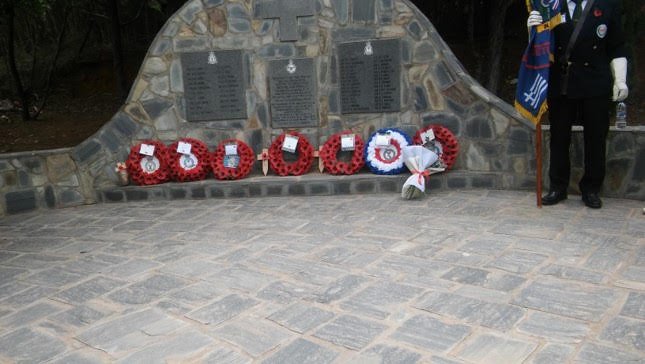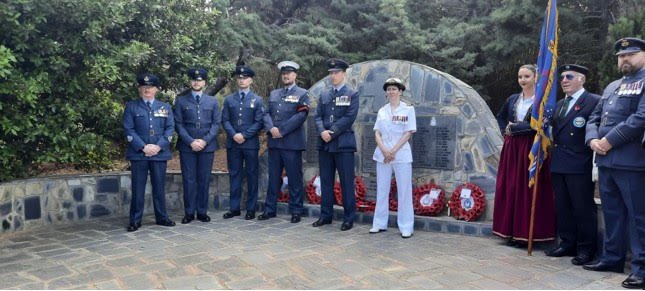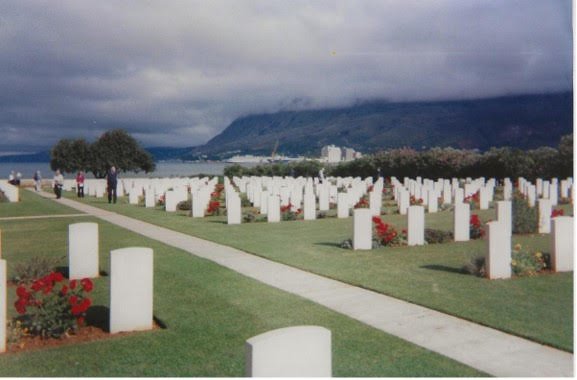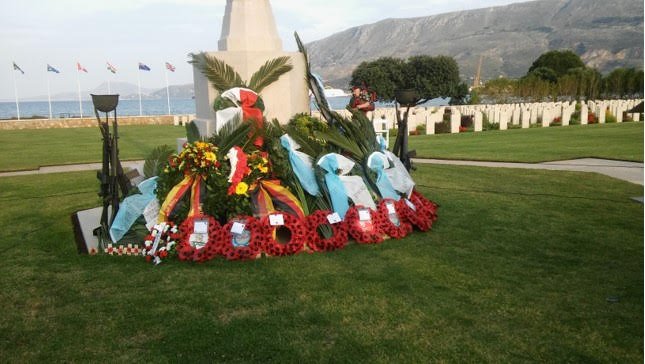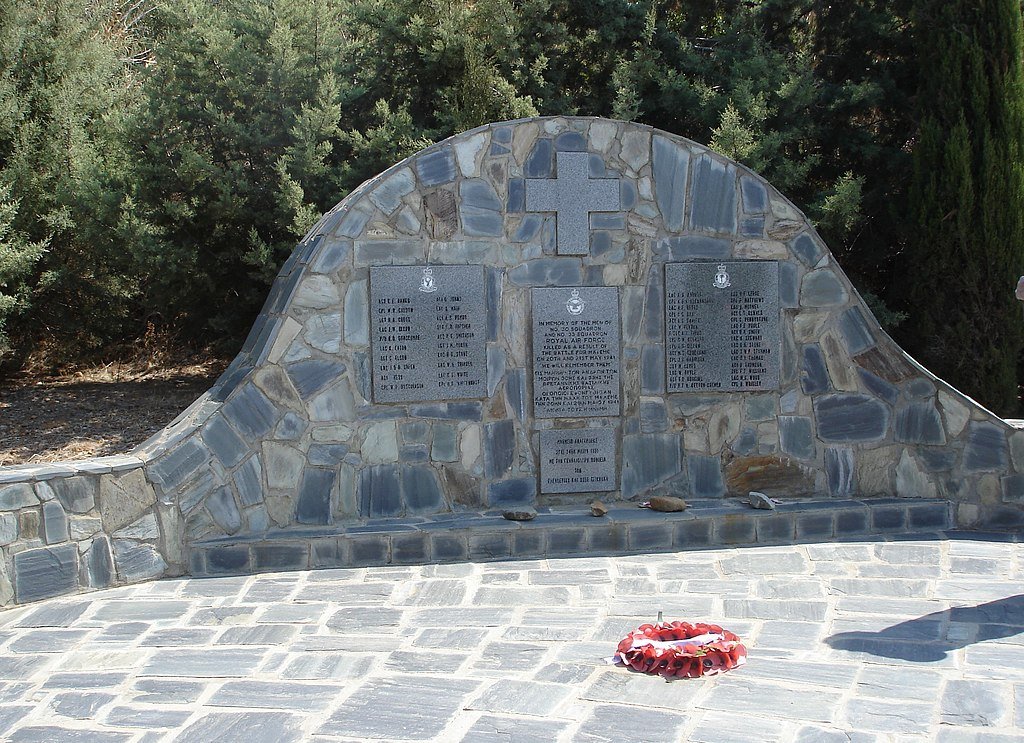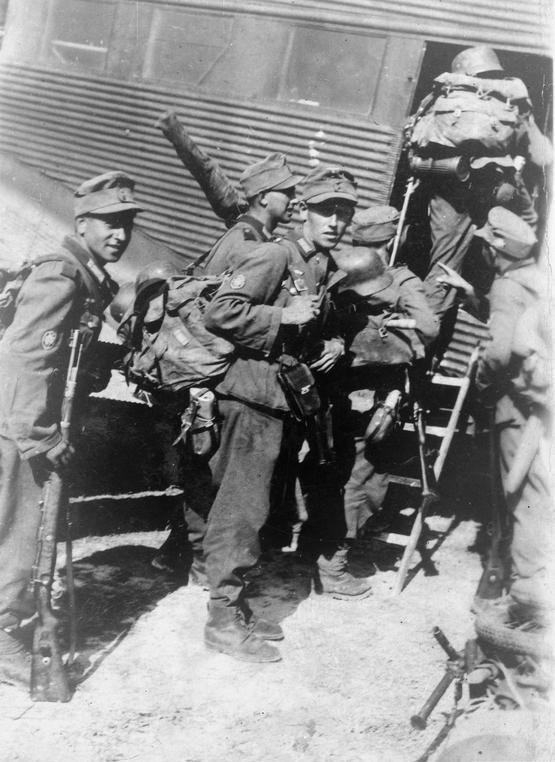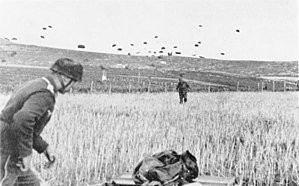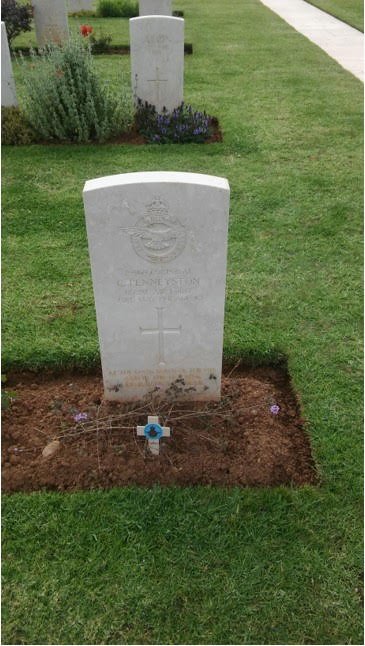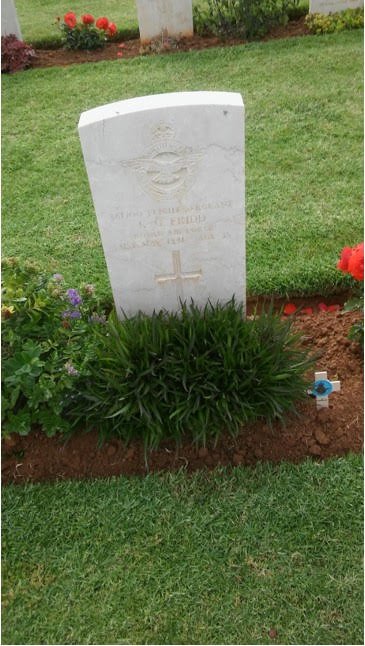30 Sqn Memorial and the Battle of Crete
Meleme Memorial on Crete
Some of you may be aware that the Sqn has a memorial on Crete, on the hill overlooking an old airfield of Meleme. The memorial was erected to commemorate the members of 30 and 33 Squadrons who lost their lives back to 1941 during the Second World War. This is the short story of what happened, and the circumstances leading up to these tragic events, with particular emphasis on 30 Sqn.
So, on 4 October 1940, Hitler agreed to an attack on mainland Greece by Italian forces because Greece was Great Britain's last remaining ally in Europe. Hitler's view was that this attack would put Britain under more pressure and reduce its capability of continuing the war with Italy in Egypt. Moselini attacked Greece on 28 October 1940.
Britain quickly determined to provide full support to Greece, and 30 Sqn was one of the units involved. At that time 30 Sqn had been carrying out attacks against the Italians in Egypt and was based at Eleusis, near Athens. The Italians did not expect the resistance they received, particularly from the Grecians civilians, and the Greek Army soon pushed the Italians back. Whilst there, 30 Sqn's Blenheims conducted many missions in Greece and at one point 30 Sqn's 'B' and 'C' maintained the defence of Athens along with 17 Hurricanes from 33 Sqn in February 1941.
German Paratroops boarding a Ju52
On 4 April 1941, an order was received instructing 30 Sqn to send a detachment of six Blenheims to Meleme in Crete to provide cover for convoy protection for the RN and supply vessels, and carry out offensive patrols when required.
The Germans by now were winning in the Balkans and they soon crossed the border into Greece in support of the Italians. Unfortunately, enemy advances were significant and were beginning to force the evacuation of airfields in the north of Greece which meant Allied forces moved south. It was becoming clear that British forces in Greece could not hold out and on the 17 April 1941 30 Sqn received orders detailing the move to Meleme in Crete to join 'C' Flight.
Many other RAF personnel were arriving in Crete brought there by Sunderland flying boats and Bombays from 216 Sqn. However, some RAF personnel were left behind and 30 Sqn Blenheims were called upon to go to Eleusis and evacuate them. In all, and to its credit, 30 Sqn rescued 300 personnel in difficult conditions. It was becoming quite conjested in southern Greece but all Allied forces in Greece were fully evacuated to Egypt by the end of April 1941 by 3 destroyers escorted by 30 Sqn Blenheims.
Those evacuated to Crete were in very poor condition with little equipment and with the Germans now attacking Souda Bay in Crete, a gradual evacuation from Crete to Egypt was underway.
Aircraft serviceability was a serious issue with five Blenheims unfit for operations. These were flown to Abu Sueir for repair leaving one for reconnaissance duties only. The German bombing of Crete and particularly Souda Bay, intensified with Bf109's dealing with Gladiators and Hurricanes relatively easily. 30 Sqn was ordered to evacuate to Egypt on 15 May 1941 taking as many groundcrew as they could. The last damaged Blenheim to leave Meleme for Egypt was carrying as many 30 Sqn personnel as possible, according to the Sqn's F540 records. Unfortunately, this meant the remaining crew had only one Bofors gun and a handful of hand weapons to defend themselves.
The Sqn became non-operational from that point.
On the morning of 17 May 1941, the Meleme airfield was heavily strafed by the enemy so the remaining 30 Sqn personnel had to move to the hills overlooking the airfield led by Plt Off Crowther until it was over. The enemy attacks were coming from the Eleusis, where 30 Sqn were once based. From here the Germans took-off with Ju52s towing gliders with enemy soldiers onboard, and paratroopers. However, the Germans lost virtually all of their men once the first wave landed and this proved to be very expensive indeed in terms of loss of life for the Germans largely due to the defending New Zealand soldiers and the men from 30 Sqn. Unfortunately, the number of German paratroopers was so great it was not long before the Meleme was overrun.
Crete Landings
By the 21 May, the entire district was occupied by the enemy. The 30 Sqn men decided to leave the area in the hope of being evacuated by the Royal Navy but understandably they were confused and were not sure what to. Some elected to go south, and others east. There are many accounts of the heroics of the evasion that took place at this point. They are listed in the F540, and covered particularly well in the excellent book written by John F Hamlin, 'Flat Out' but the upshot was:
30 Sqn lost one officer and 29 airmen;
two officers and 56 men were taken prisoner.
In the late 1980's survivors of 30 and 33 Sqns determined to have a joint memorial built to record the names of those who lost their lives and commemorate the event. Unfortunately there was no public funding available so the first problem was to raise money to complete the project. The second issue was trying to build the memorial in a foreign country. This was accomplished with the considerable assistance from Mr Elef Tsiknakis, whose own family were treated brutally by the Germans
After all the hard work it all paid off with the unveiling by HRH the Duke of Kent on 25 May 1991. The Duke was accompanied by AVM A D Dick CB CBE AFC MA FRAeS RAF (Retd) who was the then Chairman of 30 Sqn Association and did so much to foster the memorial project. Also in attendance were 24 veterans who fought in the battle from 30 and 33 Sqn.
Source:
'Flat Out' by John F Hamlin ISBN 0-85130-308-0
Wikipedia
We are lucky in that we have two members of 30 Sqn Association who looks after the memorial on our behalf when they visit the island so our thanks go to Pete Gregory and Michael Vellacott for all their efforts with this special memorial.
Michael has kindly provided us with some images of the cemetery and memorial at Meleme
